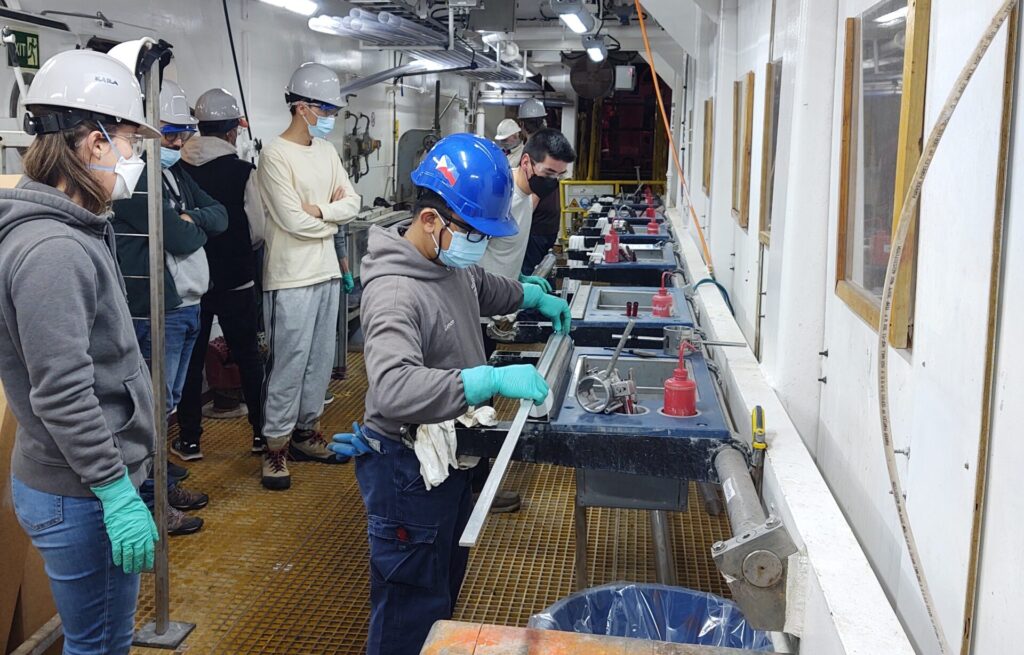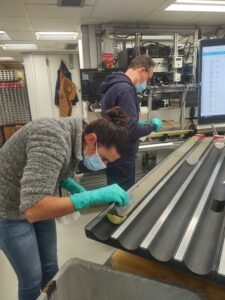
Core on Deck!

After a 5-day transit Expedition 401 arrived at its first drill site (ALM-03B) on Sunday evening, December 17! With the thrusters in place and the sun setting, the drilling team went to work getting the thick, heavy drill sections to the ocean floor.
The JOIDES Resolution will stay at this location off the coast of Portugal for around 10 days pending any weather impacts as the team works to acquire core that could provide unique insights into the impacts of the Messinian Salinity Crisis (MSC).
Learn more about the MSC in our last blog post here
Around 4:50am GMT on December 18, the crew got the expedition’s first core on deck! After resting to get to room temperature, the first core descriptions and analysis began mid-day. Work will continue until an anticipated depth of 930 meters is reached.
The MSC caused massive changes in ocean chemistry and circulation patterns, which in turn had big impacts on global climate. By studying these cores and the cores from upcoming land and sea drilling sites, we get a window back into the local and global effects of these events millions of years ago. What we learn could even help us better quantify general ocean circulation models today and their impacts on climate in the future.